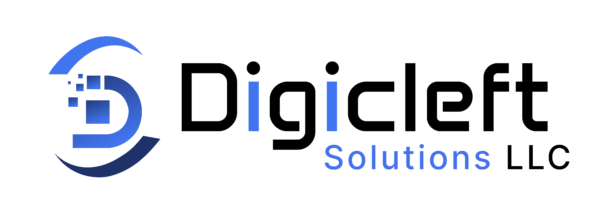
Introduction: Thinking Beyond Off-the-Shelf Software
So, you’re considering building custom software for your business? That’s a big step—and an exciting one. Off-the-shelf tools can only take you so far. They’re great until you hit a wall with limitations, forced workflows, or integrations that just don’t click.
Custom software, on the other hand, is like a tailored suit. It fits your business perfectly… but only if it’s made the right way.
Before you dive in, there’s a lot to think about. Budget, team, timelines, goals—it’s not something to jump into blindly. So let’s break it down, simply and honestly.
Why Businesses Build Custom Software
First, it helps to understand why businesses go the custom route. Some common reasons:
- Unique processes that no off-the-shelf tool supports
- The need for better integration between existing systems
- Improving efficiency, automation, or data accuracy
- Wanting full ownership and control over the product
- Enhancing security or compliance
- Creating a competitive advantage or digital product
If any of that resonates, you’re probably headed in the right direction. But—custom means commitment.
What You Should Know Before You Start
Here’s where the rubber meets the road. Custom software isn’t plug-and-play. It’s a project, a journey. Let’s walk through what you need to know before you start.
1. Get Clear on the Problem You’re Solving
It sounds obvious, but you’d be surprised how many software projects begin with a vague goal like “make operations easier.”
Before you write a single line of code, answer this:
What is the core problem the software will solve, and for whom?
Start small and specific. Example:
“We need a custom CRM because our sales team wastes hours manually updating spreadsheets.”
That kind of clarity drives the entire process forward.
2. Know Your Budget (And Plan for the Unexpected)
Custom software isn’t cheap. You’re not just paying for code—you’re investing in:
- Business analysis
- UI/UX design
- Frontend + backend development
- Testing
- Deployment
- Ongoing maintenance
Depending on complexity, a typical SMB custom solution can cost $20K to $200K+. The bigger the scope, the bigger the price tag.
💡 Tip: Always budget 15–20% more than estimated. Unexpected tweaks or changes will pop up.
3. Choose the Right Development Partner
You don’t just want a coder—you want a problem solver. Someone who can translate your business logic into intuitive software. When evaluating agencies or freelancers, look for:
- Real-world experience in your industry
- A clear development process
- Transparency about timelines and costs
- Willingness to challenge and guide your ideas (not just nod yes)
And always ask to see case studies or working demos.
4. Start With an MVP (Minimum Viable Product)
Trying to build everything at once is the fastest way to burn time, money, and patience.
Instead, focus on the smallest version of the software that delivers real value.
Ask yourself:
- What’s the one job the software must do?
- What features are nice-to-have but not must-have?
Build that core first. Launch it. Use it. Learn from it. Then iterate.
5. Map Out Workflows Before You Build
Good software doesn’t just look pretty—it works with your existing processes. Or, better yet, improves them.
Take time to visualize the workflow:
- Who does what?
- What data moves where?
- What happens after each action?
Use tools like flowcharts, whiteboards, or user journey maps. This will save tons of time during development.
6. Think Long-Term: Maintenance and Scaling
Software isn’t a one-and-done deal. You’ll need:
- Regular updates
- Bug fixes
- Hosting and server monitoring
- Security patches
- Feature upgrades as your business grows
Plan for it. Budget for it. Consider building a support retainer into your initial agreement.
Also, think scalability: Will this software support you when your business triples in size?
7. Don’t Skip Testing (Even If You’re in a Hurry)
We get it—you want to launch. But skipping proper testing is like flying a plane before checking the engine.
Make sure your developers include:
- Unit testing (for individual functions)
- Integration testing (how modules work together)
- User acceptance testing (UAT) — where you and your team get to try it out
- Load testing (for performance under stress)
A buggy launch can kill trust before your users even get started.
Bonus: Questions to Ask Before Building
Here’s a quick gut-check list:- What is the one problem this solves?
- Who will use it, and what do they need most?
- How will we measure success?
- Can our team handle change and adoption?
- Are we building for today—or the next 5 years?
Conclusion: Build Smart, Not Just Custom
Custom business software can be a game-changer—but only if you build it with the right mindset. It’s not just about features. It’s about solving real problems, saving time, and giving your team a tool they’ll actually use.
So take your time. Plan carefully. Choose your team wisely. And always keep the end user in mind.
Because in the end, custom software isn’t about the code—it’s about the people using it.
If you’re ready to explore building software that fits your business like a glove, we’d love to chat. Let’s build something that actually works—for you, your team, and your customers.
👉 Contact us today for a free consultation or project quote.
Frequently Asked Questions (FAQs)
1. What is custom business software?
Custom business software is a tailor-made application built specifically to meet the unique needs of a particular business or organization. Unlike off-the-shelf solutions, it’s designed from the ground up based on how your business actually works.
2. How much does it cost to build custom software?
The cost can vary widely based on the complexity, features, and scale of the software. On average, a small-to-medium custom software project can range from $20,000 to $100,000, while larger or enterprise-level systems may exceed $200,000. Always factor in long-term maintenance and upgrades.
3. How long does it take to develop custom software?
It depends on the scope of the project. A simple MVP might take 2–3 months, while a fully featured solution could take 6–12 months or more. Time estimates should include design, development, testing, and revisions.
4. What are the advantages of custom software over off-the-shelf tools?
Custom software offers:
- A perfect fit for your business processes
- Better scalability and flexibility
- Full control over features and data
- Improved integration with other tools
- A competitive edge tailored to your needs
5. What are the risks of building custom software?
Like any big investment, there are risks. These include:
- Going over budget or schedule
- Changing business needs mid-project
- Technical issues or bugs
- Choosing the wrong development partner
- Poor user adoption if not designed with the end-user in mind
You can minimize risks with clear planning, regular feedback loops, and building an MVP first.
6. What is an MVP and why is it important?
MVP stands for Minimum Viable Product—a simplified version of the software that includes only core features. It helps you test your idea, get real feedback, and avoid wasting money on features no one ends up using.


